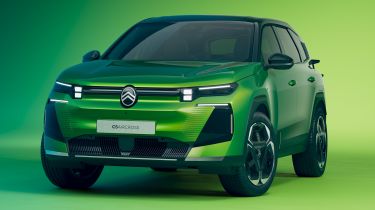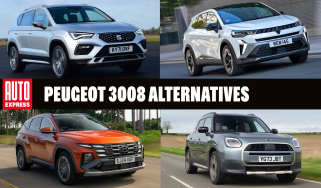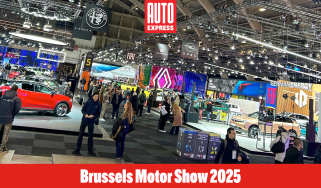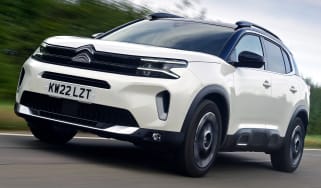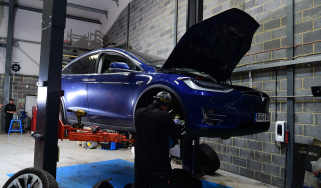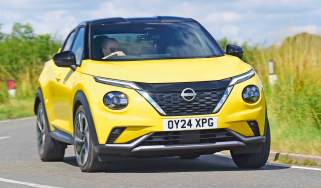New Citroen C5 Aircross: reborn SUV has your wellbeing at its heart
Spacious, comfortable and with a powertrain for every taste, the new Citroen C5 Aircross SUV is bang on the money
The Citroen C5 Aircross has been reborn for 2025 with a daring design, petrol, hybrid or electric power and a deep focus on its occupants’ comfort and well-being.
The second-generation Aircross makes a big leap forward compared with its underrated predecessor, now eight years old. The SUV has grown significantly to claim best-in-class rear seat space and a 651-litre boot, although some scepticism is needed here given that its exterior dimensions are identical to those of sister car, the Vauxhall Grandland.
The new SUV promises to live up to Citroen’s comfort-focused philosophy thanks to clever suspension and foam-packed seats with adjustable side bolsters to mould to your physique. Expect the new C5 Aircross to cost from around £30,000 for the entry-level mild hybrid model.
Citroen C5 Aircross: new design
Citroen launched its new design language with the new C3 hatch and C3 Aircross, and the C5 Aircross develops it dramatically with angular surfaces and modernist graphics which banish the original’s curves.
Aerodynamics shaped the overall form, with a lower overall height than that of its predecessor and rivals the Toyota RAV4 and Dacia Bigster, plus a roof which slopes away after the rear seats. The new SUV is significantly more streamlined than the original C5 Aircross – vital to maximise the electric version’s range. There’s still 200mm of ground clearance, though, boosted by wheels up to 20 inches in diameter.
The most eye-catching aero feature is the groove above the rear wheelarch, funnelling air along the side and through two narrow rear light strips protruding from the body. These ‘light wings’ are a fabulous touch that’s more supercar than SUV (think BMW i8).
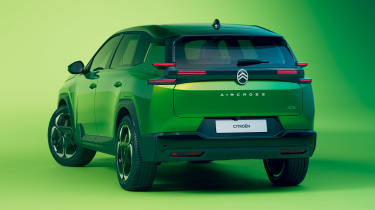
“I think the light signature will be a landmark of the car,” Citroen brand CEO Thierry Koskas told Auto Express. “It’s beautiful, it’s very original. We would never have shown the rear light [on the 2024 concept] if it wasn’t on the production car, because it’s such a strong feature and we really wanted to have it.”
The design team, led by Pierre Leclercq, have deconstructed the C3’s C-shaped lamp graphics into red horizontal strakes, linked by a black gloss panel. This motif is repeated up front, where two horizontal strips and two cubes form the daytime running lights and surround optional matrix LED lamps. These contain 20 LEDs that switch on and off to avoid dazzling oncoming traffic or the C5’s driver from road sign reflections.
All these horizontal elements are designed to accentuate the C5’s width and give it a strong stance – even though it’s no wider than its predecessor. The 4,652mm-long SUV is much longer however, having grown by 152mm.
Interior, tech and boot space
That enables a longer wheelbase, identical to the Vauxhall Grandland’s. However, this doesn’t stop Citroen claiming “benchmark” interior legroom and headroom. The backrests also recline by 11 degrees to help occupants relax.
“On C5 Aircross, we really wanted to make something big, not for the sake of it but for the space and comfort,” continued Koskas. “This is what really, really drives us. The space you have in the second row is absolutely amazing.”
And those occupants should feel pretty cosseted, thanks to Citroen’s trick suspension with ‘progressive hydraulic cushions’. These special dampers absorb the energy as the suspension compresses and rebounds, dissipating any nasty shocks. First fitted to the original C5 Aircross, the low-cost technology has spread across the Citroen range, and they genuinely improve ride quality.
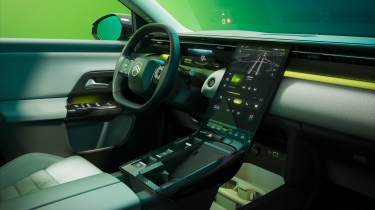
The cockpit’s design and technology is designed to boost well-being, too. The dashboard is swathed in fabric and the quilted seats can be electrically adjusted in 10 directions, with heating, ventilation and massaging functions. All this adds up to a living room vibe, Citroen reckons. The optional ambient lighting has an eight-colour spectrum and there’s a large glass roof if you tick that box.
It might feel like a living room but it’s one embedded with technology. A huge, portrait-oriented touchscreen segments the dash, not just Citroen’s biggest, but larger than anything from all its sister Stellantis group brands, which include Peugeot, Vauxhall, DS and Alfa Romeo.
There are a few physical air-con controls, but most functions are digitally operated. The touchscreen has some permanent displays – temperature adjustment, smartphone connectivity status and media/phone/nav/homepage access – but the dominant area relays the 3D navigation, infotainment or up to 16 widgets. If you’d prefer an alternative operating system, wireless Apple CarPlay and Android Auto are standard.
Embedded voice control is either by the manufacturer’s ‘Hello Citroen’ software or ChatGPT’s digital assistant operating the infotainment. There are four USB-C charging sockets – two for front occupant phones and two in the back of the centre console to keep the kids’ devices powered up.
The clear plastic in the doors and centre console are partly made from harvested Burgundy vines that would otherwise be burnt, part of Citroen’s sustainability push. Some 160kg of metal parts are recycled and 47kg of plastic comes from more environmentally friendly sources. Recycled fabric covers the seats, and leather isn’t even offered.
The first-generation C5 Aircross had three independent rear seats, which you could slide back and forth to adjust legroom and boot space. It also meant you could fit three Isofix child seats across the rear, but sadly this flexibility has not been carried over.
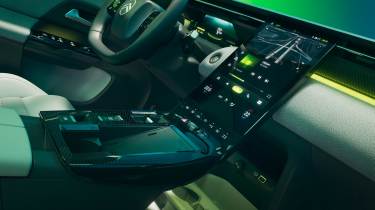
The original’s variable rear bulkhead ensured boot size could flex from 580 to 720 litres (although the plug-in hybrid’s battery reduced its capacity to 460 litres). Trunk space in the Mk2 Aircross is towards the upper end of that range, at 651 litres, and is identical regardless of drivetrain. Rear seats are split 40:20:40, they fold flat to extend the cargo capacity and the boot floor height is adjustable. There’s also 40 litres of stowage in the cabin, with a big glovebox, rear door bins and space behind that floating touchscreen.
More technology comes in the form of a 10-inch digital driver’s display, which can be accompanied by a head-up display. Standard on the C5 X, this updated version is 30 per cent larger, movable and with customisable info.
Naturally, there are lots of driver aids beyond automated emergency braking, lane assist and speed limit warning, grouped into the Drive Assist 2.0 pack to keep the optional extras simple. Notable functions include extended blindspot detection scanning up to 75 metres behind, to unlock semi-automated motorway lane changes above 43mph with a press of a steering wheel button. VisioPark 360˚ offers a multitude of views when manoeuvring, to let you see what you’re about to hit.
Powertrains and specs
Citroen continues with its ‘multi-energy’ platform strategy, with the group’s STLA Medium chassis good for mild hybrid petrol, plug-in hybrid and – for the first time – pure electric power in a C5 Aircross.
The engine line-up, all sending power to the front wheels, comprises:
- C5 Aircross Hybrid 145: 143bhp 1.2-litre three-cylinder turbo with 48-volt mild hybrid assistance and six-speed dual-clutch automatic gearbox.
- C5 Aircross Plug-In Hybrid 195: 192hp 1.6-litre four-cylinder turbo with plug-in hybrid assistance (21kWh battery) and seven-speed dual-clutch automatic gearbox.
- e-C5 Aircross : 211bhp electric motor, 73kWh battery, 160kW DC fast charging or 228bhp electric motor, 97kWh battery, 160kW DC fast charging.
Citroen is emphasising the potential range of its electrified Aircross models. The plug-in hybrid packs a 21kWh battery supposedly good for 53 miles of electric range on average; combined with the 55-litre fuel tank, this C5 Aircross should cover in excess of 400 miles.
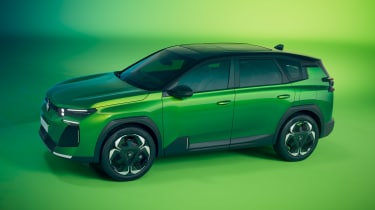
It combines a 148bhp turbocharged petrol engine with a 123bhp electric motor connected to the seven-speed dual-clutch transmission. There are three driving modes: the default Hybrid, pure Electric (until the battery runs out) and Sport, with a more urgent feel for the throttle pedal, steering and gearshifts.
Two pure electric versions are offered: the entry-level 73kWh (usable) Aircross is coupled with a 211bhp electric motor, and travels 323 miles on the WLTP test cycle. In Normal mode, power and torque are limited unless the throttle is cranked down, so performance is far from blistering: a Grandland fitted with the same drivetrain takes nine seconds to reach 62mph from standstill.
Opt for the bigger, 97kWh battery and you’ll get a 228bhp motor and a maximum range of 423 miles. This version charges from 20 to 80 per cent in 27 minutes on a 160kW DC ultra-rapid charger, or 30 minutes for the small battery. Any C5 Aircross with the 11kW bi-directional charger can be used as a power source when out and about.
The entry-level C5 Aircross runs a turbocharged three-cylinder petrol engine combined with a low power (28bhp) electric motor built into the transmission. This allows the Aircross to run on pure electric power at low speeds: Citroen reckons it’ll spend half the time in urban driving with the petrol engine dormant. Fuel economy should be 15 per cent lower than for its petrol equivalent.
The C5 Aircross, which arrives in the UK this autumn, will complete stage one of Citroen’s renewal, according to Koskas. “If you put all the models – C3, C3 Aircross, C4, C5 Aircross – together, you can see the unity of the design. We now have a common and spectacular light signature on all the cars. [Finally we] have a line-up that’s easy to understand and is very recognisable on the street.”
And at long last available, with the new C3 and C3 Aircross finally arriving in UK showrooms after a long software delay. With minnows SEAT, Suzuki, Porsche and Lexus outselling Citroen in the UK so far this year, it’s high time for take-off.
Click here for our list of the best family cars...
Find a car with the experts

